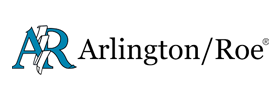When it comes to life insurance, term life insurance is one of the most straightforward policies to understand. You choose a period – usually 10, 20, or 30 years – that you wish the policy to be active and how much coverage you would like to purchase. Should you pass away during the active period of the policy, your named beneficiaries will receive their portion of your death benefit. Because term life insurance is only valid for a specific number of years, it is less expensive and more easily attainable than whole life insurance. When shopping for life insurance, you’ll want to determine how much coverage you need to purchase.
Recently, many financial professionals recommend that customers use the DIME method to determine how much coverage is needed. DIME is an acronym that means Debt, Income, Mortgage, and Education. Start by adding your debts that will need to be paid when you die, including credit cards and student loans. Next, you’ll look at income, any remaining mortgage balance, and future educational needs, such as funding college for kids.
While there are numerous benefits to term life insurance, it has disadvantages. If you pass away outside of the policy period, you will not receive any death benefits. It does not include a cash value component like whole life insurance does.
Life insurance does not have to be complicated. No one understands the different policies and their complexities better than the knowledgeable professionals at The Ryan Insurance Agency in Clarkston, MI. Call us today to schedule a no obligation and complimentary consultation to learn more.
























